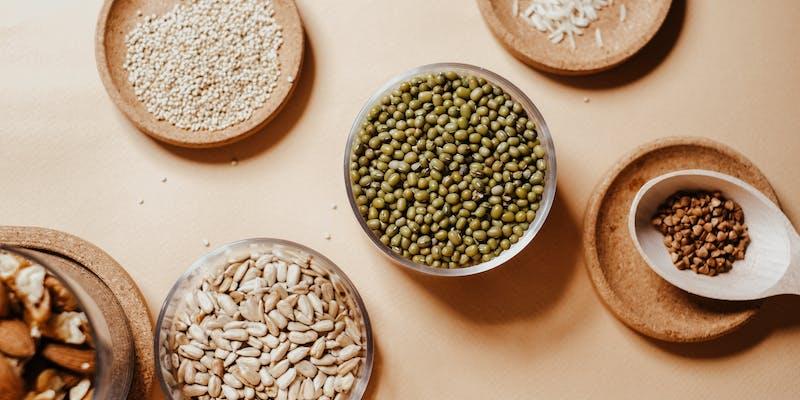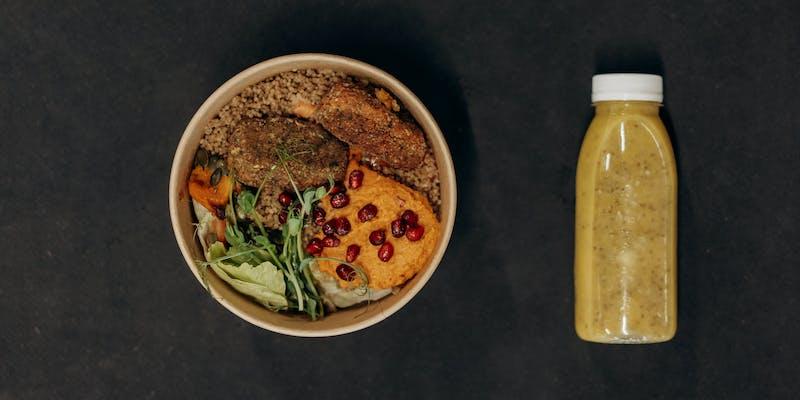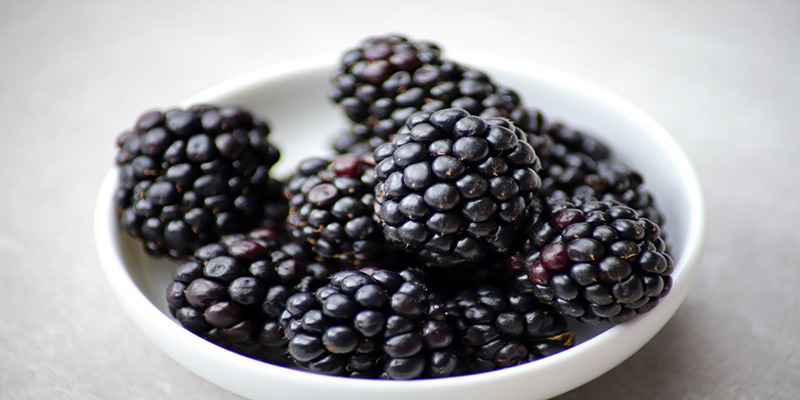Uncovering Quinoa's Nutritional Profile and Its Wellness Perks
Dec 22, 2023 By Nancy Miller
Other grains, like wheat and rice, grow on grass, but quinoa seeds don't. It doesn't contain gluten and tastes and feels crunchy and nutty, so people allergic to gluten or wheat may like it. The seeds are flat and oval and taste different, bitter to sweet. Quinoa is often boiled and then added to soups, salads, or breakfast cereal.
Nutrition Facts
Cooked red Quinoa nutrition facts include providing carbohydrates, protein, and lipids—a flexible, healthy grain substitute with 21% carbs, 14.6% protein, and 14.2% fat. One cup (185 grams) of cooked Quinoa has 222 calories.
To clarify, 100 grams of cooked Quinoa comprises 120 calories, 72% water, 4.4 grams of protein, 21.3 grams of carbohydrates, 0.9 grams of sugar, 2.8 grams of fiber, and 1.9 grams of fat. Quinoa, with 21% carbs, is versatile, like barley and rice. You should know that 83% of these carbs are starches. The remainder are fibers and a little sugar.
Quinoa's 53 GI affects blood sugar somewhat. It may reduce the risk of diabetes and heart disease. Quinoa's 10% dry fiber content exceeds brown rice and yellow maize. This meal contains mostly insoluble fiber, notably cellulose, which may lessen diabetes risk. Insoluble fiber can ferment in the stomach, supporting healthy gut microbes and improving mood. Quinoa excels in protein. Its 4.4% protein content exceeds barley, rice, and maize. Quinoa comprises all nine amino acids and is a complete protein. This term is crucial since some amino acids are essential and only available in the diet.
Quinoa is special because it contains lysine, a rare plant amino acid. Large quantities of methionine and histidine make it a better plant-based protein source. Quinoa is beneficial for folks who wish to eat more readily absorbed protein. Quinoa calories and carbs are low in fat. About 2 grams of fat per 100 grams. Like other cereals, Quinoa's principal fatty acids are palmitic, oleic, and linoleic. Quinoa is gluten-free; therefore, gluten-sensitive persons may consume it.
Vitamins And Minerals
Quinoa is a nutritious powerhouse with more vitamins and minerals than other grains. Quinoa is rich in antioxidants and critical elements for wellness:
- Manganese: A trace mineral needed for metabolism, growth, and development, is abundant in whole grains.
- Phosphorus: Protein-rich meals are essential for bone and tissue function.
- Copper: Heart health depends on copper, which Western diets often lack.
- Folate: Folate is a B vitamin needed for cell function, tissue development, and pregnancy.
- Iron is essential for many bodily activities, including red blood cell oxygen delivery.
- Magnesium is essential for many body functions and is often low in Western diets.
- Zinc: This vital mineral promotes health and participates in many body chemical activities.
Plant Compounds

Quinoa is a nutritional powerhouse with several plant elements that give it unique flavor and health advantages. Quinoa and similar crops have more flavonoid antioxidants than cranberries, known for their flavonoids. This makes Quinoa a tasty complement to dishes and a powerful antioxidant. Quinoa's antioxidant levels may decrease while cooking. Quinoa's rich plant components and nutritional content make it a good choice for individuals seeking a flexible, flavorful food and a holistic approach to well-being.
Quinoa's flexibility and overall health are highlighted by these components:
- Saponins protect quinoa seeds from insects and other hazards. They taste harsh, but soaking, cleaning, or roasting before cooking eliminates them.
- Quinoa's quercetin, a polyphenol antioxidant, may protect against heart disease, osteoporosis, and several cancers.
- Kaempferol, another polyphenol antioxidant in Quinoa, may reduce the risk of chronic illnesses like cancer.
- Squalene, a precursor to steroids in Quinoa, is an antioxidant that boosts health.
- Phytic acid, an antinutrient in Quinoa, reduces iron and zinc absorption. Soaking or sprouting Quinoa before cooking reduces phytic acid.
- Quinoa's oxalates may bind with calcium and limit its intake, raising kidney stone risk in sensitive people, but the effect is modest.
Despite its bitterness, bitter Quinoa has more antioxidants than sweeter types. Both varieties are rich in antioxidants and minerals. Benefits Quinoa nutrition facts say these seeds have the most antioxidants among ten cereals, pseudocereals, and legumes.
Health Benefits

Quinoa, abundant in nutrients and versatile in preparation, is becoming more popular as a nutritious meal with numerous advantages.
Blood Sugar Management
A study suggests that Quinoa may help people with type 2 diabetes control their blood sugar. Quinoa and other whole grains are better for your health than processed carbs, which raise the risk of diabetes and heart disease. Quinoa greatly reduced blood sugar, cholesterol, and triglycerides in rats fed a high-fructose diet. These are all things that put people at risk for type 2 diabetes. Based on these studies, Quinoa might be a good food for people with diabetes.
Weight Loss Help
Quinoa is a better weight-control option, delivering various benefits. Quinoa helps control weight because it has more protein than rice, maize, and whole wheat. Protein's ability to boost metabolism and make you feel full enables you to lose weight and prevent obesity. More fiber than other whole grains, Quinoa promotes satiety and assists in portion management and digestive health. Weight reduction is also aided by its low glycemic index (GI), which prevents overeating and hunger. With its nutty flavor and various culinary uses, Quinoa helps people lose weight and maintain a healthy weight.
Gluten-free Goodness
Quinoa meets celiac disease patients' gluten-free demands. Quinoa offers gluten-sensitive people better nutrients and antioxidants than other gluten-free options. Due to their versatility, Quinoa products are a tasty and healthy alternative to bread and pasta. Quinoa makes a gluten-free diet more balanced and delicious for celiac disease patients. Quinoa can suit celiac disease patients' dietary needs and improve meal nutrition by becoming a staple.
Side Effects
Quinoa rarely causes negative effects. However, it has traits that merit consideration with many cereals and grains. Quinoa contains phytates, which may impair iron and zinc absorption. Although phytates are found in many grains, they may affect mineral absorption.
Due to its oxalate concentration, Quinoa belongs to the Chenopodiaceae family with spinach and beets. High oxalate levels in certain meals can cause kidney stones in susceptible people. Rinsing and soaking Quinoa before cooking reduces the risk of phytates and oxalates. These easy methods can reduce the effects of these substances, keeping Quinoa a healthy and well-tolerated food for most people.

Ensuring Safe Lives on Victorian Farms: Educating Teenagers on Farm Safety

Blackberry Nutrition Facts and Health Benefits
How Partnerships Are Strengthening Health Promotion Initiatives in Schools

Essential Ball Exercises for Beginners: Boost Balance and Core

30 Delicious Low Carb Snacks You Can Enjoy Anytime

Squash Seeds and Their Advantages - A Beginner's Guide

Revolutionize Your Fitness Journey with 5-Minute Workouts


